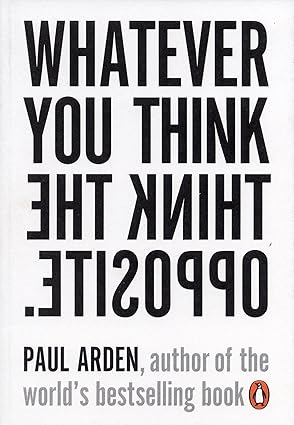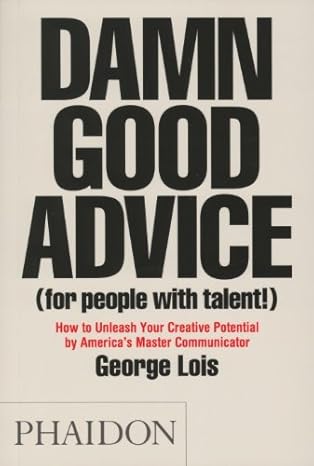In the early stages of creating this site, while I was still trying to work out what it was, I did a bit of personal data mining: I revisited websites, publications and writers that I’d previously found engaging and tried to establish what I liked about them, what I didn’t, and whether my views on them had changed over time.
Not long into this process, I landed on a couple of books, neither of which I’d read for a while but both of which I immediately felt were strongly aligned with what I wanted to say and how I wanted to say it.
I’m not going to claim that either of them offered some sort of Damascene moment for me, but they managed to express ideas in a way that I felt was powerful and effective. They’re rapid-fire, insightful and entertaining and either is worthy of the half-hour or so that it’ll take you to digest them.
Whatever your area of expertise or endeavour, I’d highly recommend them.
And in case you need telling, the links on this page are Amazon affiliate links, so if you click&buy from here, Bezos might throw me a couple of pennies.
Whatever You Think Think the Opposite
ISBN: 978-0-14-102571-1

Amazon’s listing for this book describes Paul Arden as a “global business guru” and although he was undoubtedly a rockstar in his time at Saatchi & Saatchi, that feels like a misrepresentation. That said, it’s not the least bit surprising that this particular title has been adopted as a miniature business bible: His take on risk and reward, failure and success, will resonate immediately with founders everywhere.
Personally, I think those are some of the least interesting bits.
The writing is sharp, funny, and accessible, and the barrage of short sentences and compact paragraphs reliably triggers instant reassessments of many of the unshakeable truths that we all cling to. But if you’re not up for that, you can just look at the pictures: they’re generally gorgeous!
Arden started out as an ad man before later becoming a photographic gallery owner and collector, and his eye for a high-impact image is outstanding. It’s visually striking throughout (on page 55, quite literally) without ever being overly arty or pretentious. The primarily-monochrome images are puctuated by double-page splashes of livid colour, and as the book’s final image perfectly illustrates, he knew exactly how to use a visual to stimulate a response.
It’s also a masterclass in the often-overlooked artistry of the editor. Every point is boiled down to an almost haiku-like level of efficiency. Zero fat, Zero filler, barely a wasted word or punctuation mark. Writers can have a tendancy towards a bit of verbal self-indulgence (see this entire blog for examples) but a good editor can machete their way through all of that overgrowth to reveal the beauty beneath.
One final point on construction: the typography is fantastic. Some sections are just as much about how the words are arranged on the page as they are about the words themselves. In some instances, the placement is the entire point. Images often cut through copy, frame it, complement it or contradict it. It’s clever in the sort of way that makes you feel clever for recognising how clever it is.
All of that said, the main reason why it’s on this page is because of the attitude. It’s a punk pamphlet written by a rebel in a suit who operated at the very heart of the establishment, and theres something that I’ve always found highly relatable about outsiders who manage to succeed in a world where they have little apparent desire to belong.
Affiliate Link: Whatever You Think Think the Opposite
Damn Good Advice (for people with talent!)
ISBN: 978-0-7148-6348-1

There are a lot of similarities between this and “Whatever…”. Typography, layout, imagery, style. They’re both practically the same size, and they’re both written by ad men. They both deliver similar points about the world of work and both hold a mirror to the media industry of which they’re each a by-product. They also both have a lot of attitude: it’d be a bit unfair to describe it as an attitude problem, but they both tread pretty close to that line.
So far, so similar, right?
Where they differ is in the way that each author positions and presents themself. I read the whole of “Whatever” without learning very much about Arden himself, and even in the book’s only picture of him, his face is almost completely concealed.
“Damn good…” couldn’t be more different in that respect: George is front and centre from the very first page.
This is his world view, but it’s also his life story, and sandwiched between the brilliance and the bombast, is a fascinating personal memoir. I’m generally a little sceptical about autobiographies: when a person tells their own story, they typically tell it after the inevitable distortions brought on by years of remembering and mental re-editing. It’s hard for them not to feel a little bit rose-tinted. But for the most part, what’s put forward here rings true and it’s backed-up in places by some compelling and fascinating photographic provenance.
It’s also much more than just a handbook for those who wannabe a bit more “edgey”. It’s a retrospective of some of the greatest work of one of the most influential and enduring creatives that advertising has ever produced. If this is Lois’ elevator pitch for legend status then he absolutely smashes it.
It’s crammed from cover to cover with visuals that are often staggeringly simple and yet so profoundly influential that their DNA can still be clearly seen 65 years later, in almost every corner of the modern media landscape. Lois was fully aware of what he’d achieved and this is a playlist of his greatest hits.
Theres a sense in which the book is a time capsule – the world it largely describes no longer exists – but two things maintain its relevance: the incredible freshness of the imagery and Lois’ attitude. He was a Boomer who packed more sass than a truckload of Gen-Alphas, but with a portfolio and a talent like this though, he’d long-since earned the right to say pretty much whatever he wanted.
Affiliate Link: Damn Good Advice (for people with talent!)
